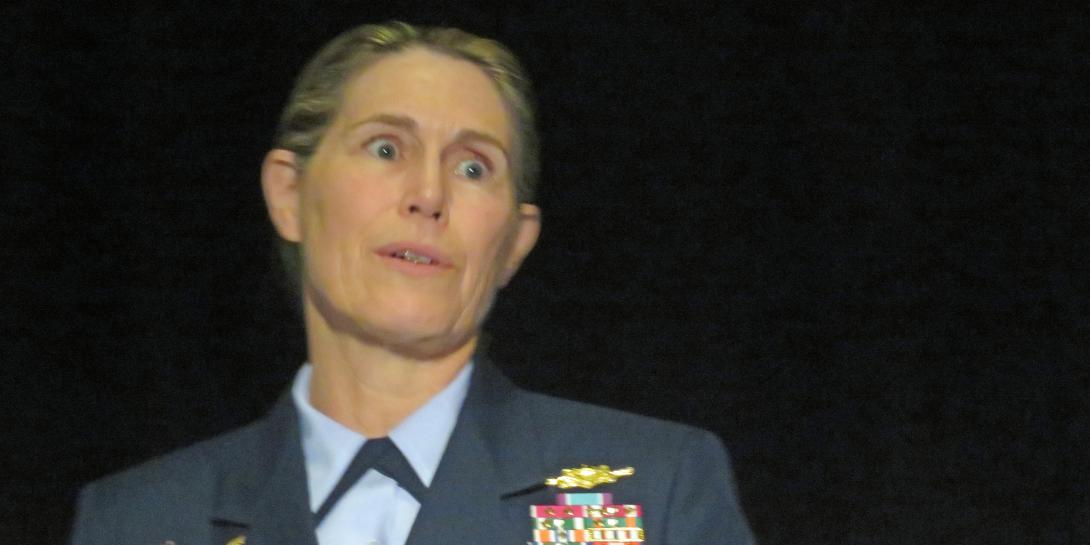Coast Guard Pivots to Innovation in Hurricane Response
The Coast Guard is under-resourced and yet is always trying to do more, said Vice Adm. Sandra Stosz, USCG, deputy commandant, Mission Support, U.S. Coast Guard, at the AFCEA Homeland Security Conference in Washington D.C. For example, today the service is performing its normal mission; supporting response to Hurricanes Harvey and Irma; and providing security for the U.N. Security Council.
With the two recent weather events on everyone's minds, the admiral explained two roles the Coast Guard has in current disaster relief efforts—search and rescue and reopening ports. The service is part of a of larger federal team that is dealing with the safety of life, the admiral related, adding that the Coast Guard has rescued more than 11,000 people and countless pets, facing conditions of 50 knots of wind and 50 inches of driving rain, often in the dark. And yes, there are pet search and rescue teams that get support too.
In addition to the major goal of saving lives, the Coast Guard also has to help mitigate the economic losses. These disasters create a huge challenge for the areas affected, so it is critical that ports reopen as soon as possible, she explained. Buoys that are moved off station need to be relocated, and dredging needs to be done. In Houston, the port transportation system brings in $4.5 trillion annually so it is a big deal for economic prosperity, she stressed.
While the suffering and loss in these areas is profound, Adm. Stosz pointed out that crisis breeds innovation. One innovation is a mobile flight bag for search and rescue responders, replacing heavy flight bags with electronic solutions. These include electronic maps that enable the use of Google to identify street addresses—much different from the days of someone on the ground with a flash light alerting the rescue team. This technology is something that could extend from search and rescue to port inspections, saving weight.
As a next step, the admiral would like to see the mobile flight bag transform to wearable technology. This would be a time saver for inspectors if it could capture voice and imagery. She is looking to industry for help with such modernization.
Another area for innovation is social media. With Harvey and Irma, a large number of people could not get through to 911, so they went to social media with their distress calls. “The Coast Guard is not used to sending out a helicopter in response to a Facebook post,” Adm. Stosz proclaimed. However, the commandant said that no call to the Coast Guard will go unanswered, so it had to find a way to monitor the social media channels. The service trained its people to go on the GeoSuite tacking tool, and leaned in on how the public was self-selecting to use social media for help. Going forward, the Coast Guard will need to have such technology available for locating and tracking, another role that industry could help with.
“We need an Uber for search and rescue, and we need something like Waze,” she added, so in the future, people can drop their information in a Waze-like program and let that be another tool we have. “We are looking at social media as an opportunity in the future,” she proclaimed.
Going forward, she said the Coast Guard community must challenge current information systems and be able to provide reliable operational mobility. Reducing dependence on a fixed command center is also something industry could help with, Adm. Stosz added.





Comment
be careful
In the Haiti response, a drug lord got inside the ooda loop and called in relief drops of med/water/food on his own pos. We fed the beast. Innovation is good, but trust and verify! Semper Fi!
I am a USCG Auxiliary
I am a USCG Auxiliary shipmate and AUX Public Affairs officer and provide AUX photography support to the Research and Development Center in New London. As such, I look to be informed about the Directorates (nonclassified) activities, especially as they relate to the RDC.
Comments